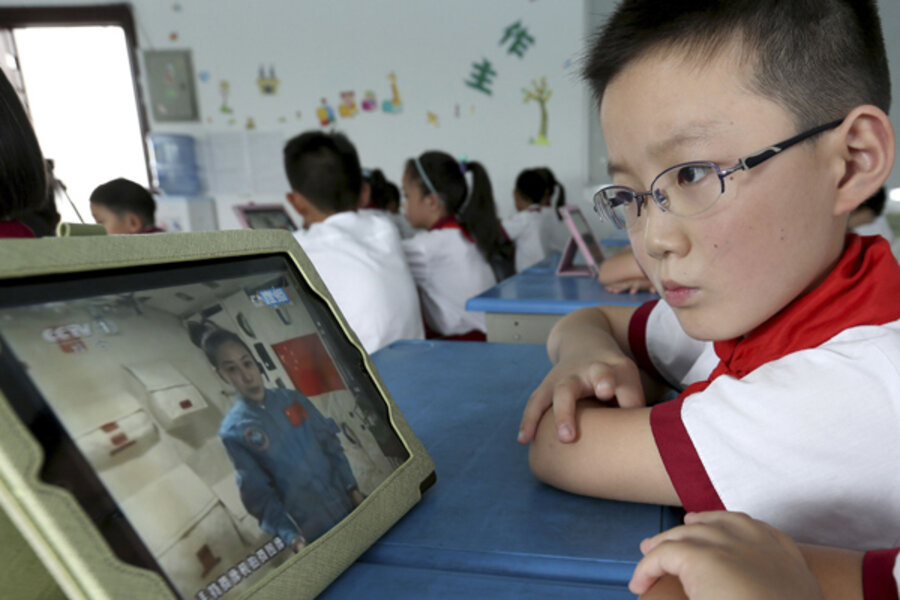Chinese astronaut teaches 60 million kids from space
Loading...
| Beijing
It adds a whole new meaning to “distance learning.”
Chinese astronaut Wang Yaping gave a physics lesson by video from a space module orbiting more than 300 km (186 miles) above the earth on Thursday.
She gulped a globule of water floating in the air, and pushed a fellow astronaut against the module’s wall with a touch of her finger, to illustrate the effects of weightlessness. Then she answered questions from a group of children gathered in a studio in Beijing watching the lesson on live TV.
The scene resembled a similar lesson that US elementary school teacher Barbara Morgan taught from the International Space Station in 2007. But this one had specifically Chinese characteristics.
The questions that the Chinese kids asked on Thursday were much like the questions that American kids asked six years ago. Do stars twinkle when you are in space? (No, because there is no atmospheric interference.) Have you seen any UFO’s? (“Not yet” was Ms. Wang’s answer to that one.)
But while Barbara Morgan and her colleagues participated in three low-key sessions with small groups of students in Idaho, Virginia, and Massachusetts, Wang’s class was broadcast nationwide on state TV’s premier channel and 60 million schoolchildren and teachers in 80,000 middle schools watched, according to China’s Education Ministry.
The ministry had “issued instructions requiring middle schools to adjust their class schedules and organize students to watch” the lesson, according to its website.
The compulsory class reflected the importance that the Chinese government has attached to its ambitious space program. Beijing first sent a human into space only 10 years ago, but plans to build its own space station by 2020.
Beijing has more than just a technological interest in space. A few years ago, just before China launched its first lunar probe, the chief scientist for China's moon program, Ouyang Ziyuan, was blunt about its political purposes.
"Lunar exploration is a reflection of a country's comprehensive national power,” he said in an interview with the official newspaper People's Daily. “It is significant for raising our international prestige and increasing our people's cohesion."






